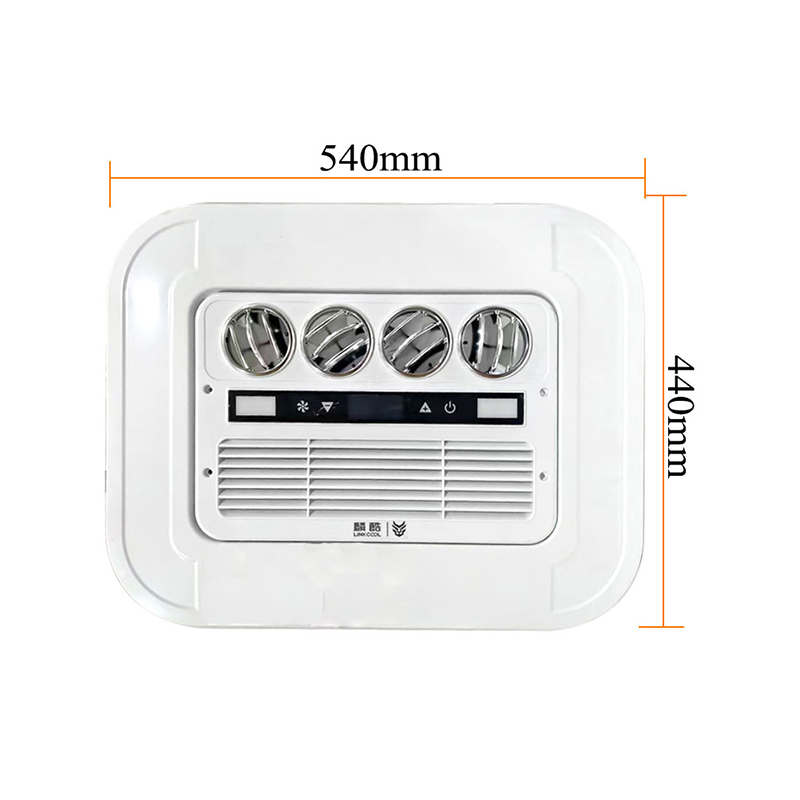The management of interior climate is a central aspect of recreational vehicle functionality, directly influencing occupant comfort during travel and stationary camping. RV air conditioners are specialized systems designed to address the unique challenges of a mobile environment, including limited electrical capacity, roof penetration requirements, and spatial constraints. Unlike residential systems, they must operate effectively in varying conditions, from crowded campgrounds with shore power to remote locations relying on generators. The market offers several distinct types of RV air conditioners, each with a specific configuration and set of advantages tailored to different user needs and vehicle layouts.

Part 1: Roof-Mounted Air Conditioners
This configuration represents the most common type found on production-line RVs. Its design prioritizes a centralized, space-saving approach to cooling.
1.1. Single-Speed Roof Units
These are the standard, entry-level systems for many RVs. They operate in a simple on/off manner: the compressor and fans run at full capacity until the thermostat's set temperature is reached, then shut off completely.
Operation and Characteristics: This cycling provides effective cooling but can noticeable temperature fluctuations and higher inrush current each time the unit starts. They are typically controlled by a basic wall-mounted thermostat and are powered by a 115-volt AC shore power connection or a sufficiently sized generator.
Common Applications: They are frequently installed on smaller travel trailers, camper vans, and mid-range motorhomes where cost-effectiveness and straightforward installation are primary considerations.
1.2. Ducted Roof Systems
In larger Class A and Class C motorhomes or fifth-wheel trailers, a single, more powerful roof-mounted unit is often connected to a network of ducts running through the vehicle's ceiling.
Operation and Characteristics: The conditioned air is distributed through vents located in different zones of the RV, providing more even cooling throughout the interior space. This system is less obtrusive inside the living area, as the primary hardware is contained within the roof and ceiling. The air handler and ductwork require careful design to ensure balanced airflow to all areas.
1.3. Non-Ducted Roof Systems
Smaller RVs, such as pop-up campers or truck campers, often use a non-ducted or "low-profile" roof unit.
Operation and Characteristics: In this design, the cold air is discharged directly from the unit's interior ceiling assembly into the main living area. This is a simpler and more direct method of cooling, avoiding the complexity and space requirements of ductwork, but it may less uniform temperature distribution in a larger space.
Part 2: Portable and Low-Profile Units
For RV owners seeking flexibility or facing installation constraints, alternative form factors offer practical solutions.
2.1. Portable RV Air Conditioners
These are self-contained units that can be moved within the RV and typically vent exhaust heat through a hose installed in a window or a specially designed wall vent.
Operation and Characteristics: Their primary advantage is flexibility; they require no permanent installation and can be stored when not in use. They are often used in smaller vans or trailers that lack a pre-installed system. A consideration is their interior footprint, as they occupy floor space, and the vent hose can reduce their overall efficiency.
2.2. Low-Profile Roof Units
While still roof-mounted, this sub-category is distinguished by its reduced height. Standard units can add significant vertical height to a vehicle, which can be a problem for low-clearance garages or for improving aerodynamics.
Operation and Characteristics: Low-profile models are engineered to provide similar cooling capacity while maintaining a sleeker silhouette. This design often involves more compact internal components and advanced airflow engineering, sometimes at a higher cost than standard-height units.
Part 3: Basement and Split-System Air Conditioners
For larger, more premium RVs, systems that separate components offer benefits in noise reduction and performance.
3.1. Basement Air Conditioners
This system relocates the entire cooling unit from the roof to a compartment in the lower part of the RV's chassis, hence the name "basement."
Operation and Characteristics: Conditioned air is then delivered through the vehicle's existing ductwork. The main benefit is a lower center of gravity and a clear roof, which can be used for solar panels or storage. It also significantly reduces interior noise, as the compressor and main fans are located outside the living space. These systems are complex to install and are typically found on high-end Class A motorhomes.
3.2. Split-System Air Conditioners
Similar to residential mini-split systems, this type separates the condenser and compressor (outdoor unit) from the air handler and evaporator (indoor unit).
Operation and Characteristics: The two units are connected by refrigerant lines run through the RV's walls or floor. This design allows for very quiet interior operation and provides flexible installation options for the indoor unit, such as mounting high on a wall. Their installation is more invasive than a roof-mounted unit, requiring careful routing of the copper lines, but they offer a modern and efficient cooling solution for custom van builds or coach renovations.